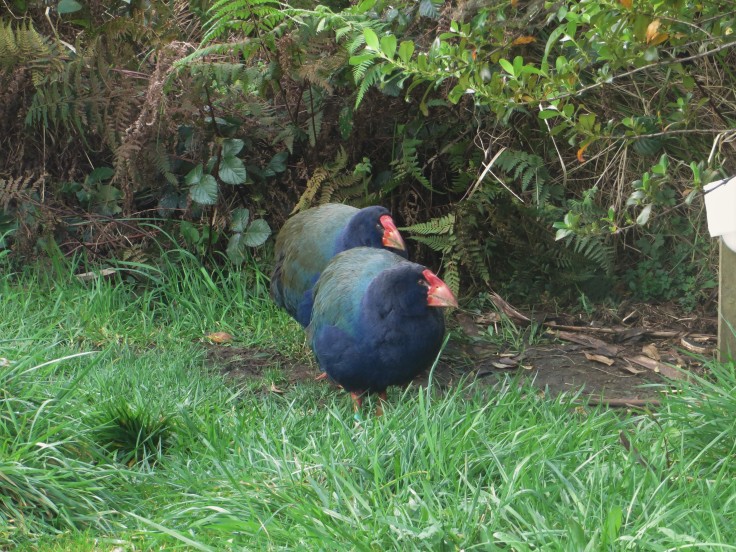Today’s bird, the takahē, is big, blue and beautiful. These flightless grass eaters are another treasured NZ bird. Once upon a time, there were two varieties of takahē: a North Island and a South Island species. The North Island takahē is now extinct, and the South Island takahē is so endangered that it was thought to be extinct from 1898 to 1948. Even now after years of conservation efforts, there are less than 400 takahē remaining.

These tussock dwellers are clad in striking blues and greens. To understand the colouring, consider the potential dangers native to NZ. Although the takahē is pretty and blue on the sides, they are green when seen from above. Being a green object moving slowly on grass may have offered some protection from their now extinct native predator, the Haast’s Eagle.
Like many of our native species, the takahē is endangered. A large part of the story is habitat loss. Evolved to suit swamps, takahē have been forced into alpine grassland since swamps have been turned to farmland. So it was in the Murchison mountains that the last vestige of the species was found. This flightless bird had managed to survive in the mountains, thanks in large part to the absence of cats, rats and ferrets. The NZ government restricted entry to the declared “special area” shortly after the takahē was found there.
Takahē are grass eaters; much like the panda with their bamboo, takahē need to eat most of the day to get the nutrition they need. This led to the discovery of another risk to their survival: competition. In areas where there are takahē, the deer need to be kept in check. Not because they eat takahē, but because they eat grass. This was recognised as a risk to takahē early on, and deer numbers in the Murchison mountains were kept in check by hunters – on foot and in helicopter. Without the intense effort to control deer in the 1960s and 1970s, the takahē population would almost certainly be in worse shape today.
Conservation is a difficult task. Unlike with the kākā, it isn’t enough to simply provide the takahē with a predator-free zone. They have proven themselves hardy and adaptable, able to live in a cooler environment than they would prefer, but they have not thrived. To thrive, they also need the correct environment, and for it to be free from competition for grasses.

Leave a comment